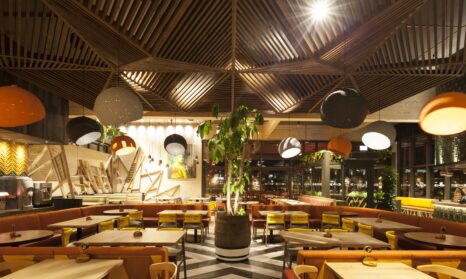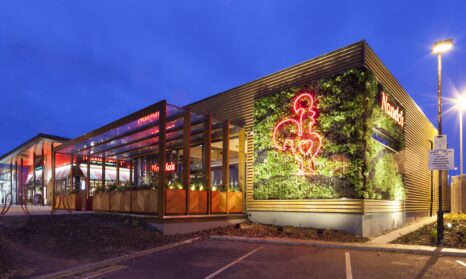Casual dining trends – and 5 ways brands can respond and thrive
I’ve heard a lot about 2030 recently. For the planet, it’s when we need to have delivered the UN’s Sustainable Development Goals. For the restaurant sector, it was the focus of a thought-provoking talk I attended at the Casual Dining Show last month.
An appetite for food with a purpose
And the two are not unrelated. What stood out for me this year was that sustainability was repeatedly mentioned as something restaurants must do. This mirrors the Sustainable Restaurant Association’s 2019 report, that describes the urgency for the sector to act on climate change issues, and the growth in consumers’ appetites for food with purpose.
At the event, Fiona Speakman from CGA explained that in order to succeed in a difficult market, restaurants have to act on sustainability issues such as food provenance, waste, ethical engagement, health and wellbeing and engagement with local communities. It is what consumers expect - CGA’s latest Business Leaders Survey found that out of the top ten consumer food trends predicted for 2019, eight of them are linked to health and sustainability.
The way people want to eat is changing
The most thought-provoking talk was given by Simon Stenning, Founder of Future Food Service. He predicts a dramatic shift in casual dining by 2030 with new types of dining; from ‘social refuelling’ - using apps and technology to order and pay for food rather than people - and informal ‘market hall dining’ experiences like Pergola.
But it was ‘neighbourhood chef-led dining’ that interested me. According to Stenning, consumers are increasingly enjoying a more local and independent experience when they dine, rather than soulless chains. By embedding restaurants to local communities, chefs are devising innovative dishes to reflect local consumers’ curiosity and put local produce on their menus.
The driver behind this change is that the traditional high street is not doing so well. No longer can restaurants rely solely on walk-ins from a buzzing high street packed with shoppers. The industry is moving towards experience-led retail with terms like “leisure-tainment” and “edu-tainment” becoming fashionable phrases.
Essentially, consumers want more than shopping. They can purchase products at the click of a button - through apps, websites and delivery services. Now, they want see/touch/feel products but buy later alongside trying new foods, visiting the cinema, and entertaining their children - all in one local destination.
Taking this concept, it’s intriguing to think about putting the needs of local people first when creating new leisure destinations by linking the ideas of ‘experience’ and ‘neighbourhood led’ dining. Could restaurants showcase local craftspeople or offer training sessions or workshops as well as lunch? How could these spaces help local communities as well as the planet?
As my colleague Anthony recently said, developments should take a people-centred approach to design, meeting local needs and enabling high quality lifestyles with a low environmental impact.
How can casual dining outlets respond to these trends?
Of course, this is far from easy, but it is not impossible. Here are my five tips:
- Be authentic, reflect your values and do the right things when it comes to your business’ impact on the planet. From your food to people, natural resources and the way you build your restaurants. It all counts in achieving the ambitious Sustainable Development Goals.
- Focus on the highest quality food possible with thoughtful, ethical sourcing. Source from ethical suppliers and local food growers where possible and reflect seasonality in your menu, which will be meaningful to consumers and convey your purpose.
- Respond to local community needs. Could tackle the loneliness epidemic with community-focused coffee mornings or host child-friendly lunch events for families?
- Actively engage with your local community. Could your food waste be a resource for a local food producer? Could local schoolchildren make a planter for your restaurant?
- Innovate and respond to changes in consumers’ interest and trends, such as reduced meat consumption or cooking with waste produce.
Now, there’s a recipe for success!







